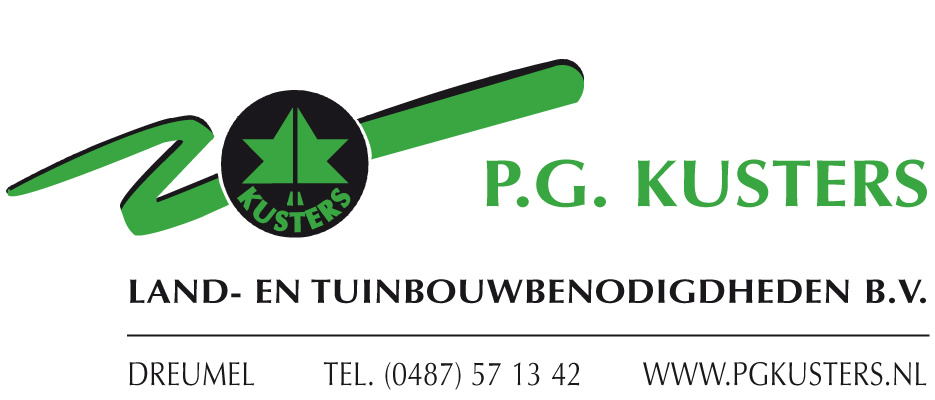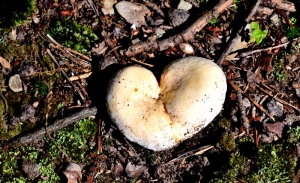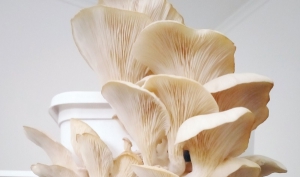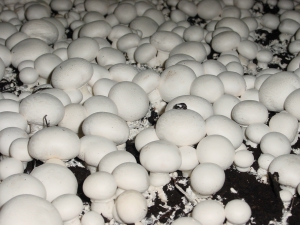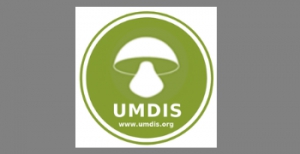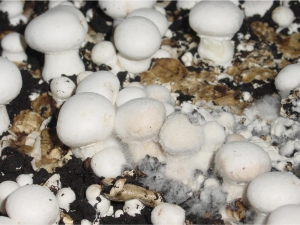
Mushroom Matter
Welcome on our platform. Why MUSHROOM MATTER? Because mushrooms play an important role in our lives as well in business. Our goal is to bring the world the very latest mushroom news with the upmost care to support the positioning of our beloved Mushroom.
A lot of studies and reports are writing about the beneficial facts of mushrooms and we like to see the increasing attention on our beloved mushroom. A lot of innovations are seen where companies are using fungi to achieve a sustainable future, for example in the clothing, construction, furniture and health industry. The recent Pandemic has even accelerated the importance of healthy food and a future without plastic. This article writes about the future of mushrooms and the impact on immunity for people and the planet.
This report reveals the top 5 ways mushrooms will play a role in protecting our immunity in 2026:
- Human and immunity: from the ancient use of mushrooms as medicines to immune-boosting everyday mushrooms converting light into vitamin D, an essential factor in our immune health.
- Food for immunity: how we will be ingesting mushroom’s vital nutrients, from supplements and burgers to drinks. Low in calories, high in nutritional value and considered to be brain boosters.
- Vitamin D: how vitamin D enhances our adaptive immunity and function, and a three-year study currently underway to explore the health benefits of Vitamin D in mushrooms.
- Planetary partners: vertically farmed in forgotten urban spaces, to plastic munching, how mushrooms are leading the smart farming revolution, secretly saving the health of our planet.
- Furniture to Martian mycelium: how mushrooms are being used to make furniture, coffins and to create habitats on lunar missions; mycelium - the compostable material that knows no bounds.
Please read the full article here.
Source: Weekly News
A Gisborne entrepreneur will soon open the region’s first “zero waste, grow your own mushroom” business that focuses on reusing waste products.
Mariska Van Gaalen is the founder of Mushroom Zero Waste an initiative that reuses plastic containers and waste materials to grow mushrooms in a sustainable way.
She says that for her to start a business meant being responsible for the entire life cycle of the product, and avoiding the production of any additional waste.
Ms Van Gaalen uses plastic containers collected from a restaurant to hold unused wooden shavings, coffee grounds and mycelium — the fungus — to grow native oyster mushrooms.
Please read the full article here.
Source: Gisborneherald, by Avneesh Vincent
Concerns over immune health and the pandemic has thrust the humble mushroom into the spotlight as experts hail the fungi’s ability to interact with gut microbes that influence healthy immune and inflammatory responses.
Please read the full article here.
Source: Nutra Ingredients
We are happy to announce that we have teamed up with the organization of the Ukrainian Mushroom Days as Information Partner. For more information about the event or registration, please visit their website here!
Furthermore we would like to introduce the organization of this event to our readers. UMDIS is one of the largest information agencies and communicational platforms for mushroom business in Eastern Europe and the only one in the Ukraine.
UMDIS is one of the biggest in Eastern Europe and the only one in Ukraine information agency and communicational platform for mushroom business.
95% of the mushroom producers in Ukraine and 90% of the mushroom producers in Russia are their audience who read UMDIS and participate in projects of UMDIS. 15% of UMDIS`s audience are Russian speaking mushroom producers from Belarus, Kazakhstan, Uzbekistan, Moldova, and Poland.
UMDIS as a news agency has been operating since 2012. They publish news, analytics, interviews, publications on technology, etc. UMDIS organizes for mushroom producers number of courses, trips, consultations. Also UMDIS is the organizer of popular projects, such as “Series of Mushroom Web-Events”, project “Getting to know suppliers”, Exhibition-Conference Ukrainian Mushroom Days. Nowadays UMDIS Agency is trusted by Russian-speaking mushroom producers because it daily provides essential information, connects with colleagues, experts, and with trusted suppliers in the industry.
Why advertise via UMDIS?
The UMDIS Information agency`s website (https://www.umdis.org/) has 1200-1500 visits per day – nearly all visitors are target mushroom audience. Also, UMDIS manages popular mushroom channels, groups, deliveries.
Readers of UMDIS Mushroom Information Agency and participants of UMDIS projects are:
▪ owners and managers of mushroom farms;
▪ supply and sales teams;
▪ technologists and consultants;
▪ suppliers of mushroom market.
UMDIS is a good opportunity to instantly message and advertise to the whole Russian-speaking audience of mushroom farmers – or to the targeted audience according to the criteria you have.
With their mushroom-based pork alternative, Baltimore-based company Meat the Mushroom is working to encourage consumers to adopt healthy, plant-based diets.
The company’s first product, a bacon alternative known as SHROOMACON, consists of five ingredients and is free of preservatives, soy, gluten, and cholesterol.
Founders of the company Marvin Montague and Aleah Rae Dorsey, originally intended to open a vegan restaurant that didn’t rely on soy as the primary protein source. Hoping to develop a more natural, non-processed alternative Montague began experimenting with ways to give mushrooms a meatier texture.
Over time, Montague realized that he could have a greater impact if he focused his efforts on retail products. “I see the people around me could benefit from going vegan, but they just don’t know [the benefits],” Montague tells Food Tank. “And if they do know, it’s hard to kick animal products.”
Checking the CO2 equipment
For optimal climate control, accurate and reliable measurements are of course very important and maintenance to the CO2 box should be standard on every farm.
First thing would be to check the tubes and the magnetic valves for leaks. If valves are leaking they need to be replaced immediately as they will cause mixed air in the tubes.
All the tubes can get condense inside and block the air flow, also causing mixed air going into the CO2 sensor and sending the wrong value to the climate control computer. You can avoid this by blowing the tubes out regularly with an air compressor to avoid condense to gather inside them. Especially when tubes are not placed correctly and have no filter at the end of the tube this will happen easy.
A good practice on every farm would be to check the reference measument value on your CO2 system daily. That value is the CO2 measured in your outside conditions which is either outside, in the central duct or wherever the outside measurements sensors and CO2 tube are placed. The ppm value depends on where it is placed but should be consistent and seeing inconsistent value there can be a first indication that there is something wrong with your CO2 meter and some maintenance is needed. A good portable, calibrated CO2 meter can be a great help and indicator. You can detect problems before any misreading’s will cause more damage than necessary.
When all the tubes are clean and no leaks are detected the CO2 meter needs to be calibrated using a zero cartridge for the low values and CO2 calibrated gas for the higher values. Ask your supplier for the exact instructions.
Erik de Groot
Global Agriculture Services
This email address is being protected from spambots. You need JavaScript enabled to view it.
Cobweb, still going strong
Lately I am getting a lot of phone calls again about cobweb disease. The growers see the first signs appearing at the end of the first flush and by the time the second flush is starting, the problem practically gets out of control. To beat the problem it is necessary to know where the disease is coming from and how it grows and spreads.
The cobweb mould is a soil born fungus, using a vector (taxi). The vector may be sand, dust, casing soil and all different materials used by the people on the farm. Think of brooms, shovels but also mushroom harvesting equipment. This way the spores of the fungus are transported. But the fungus does not have to reach the state of sporulation to be infectious. If the fungus is damaged is splitters like glass. Small particles of the fungus can regrow fast into a new patch of cobweb again. So only touching the fungus by hand or by watering is enough to spread it like wildfire. It grows best under warm and moist conditions. So to slow it down it will help to lower the RH in the room and to drop the temperature a bit. But it will not stop it.To stop it you will have to find the origin of the infection and stop that. Many of the infections I see at this moment seem to start during the first flush so I immediately look at the harvesting on the farm.
We make sure pickers change the gloves regularly and disinfect the knives every day. The clothes of the pickers have to be changed daily and we look at the logistics of the farm. No one is allowed to move backwards in the schedule. In other words, if you where in a second flush, never go back into the first. For the grower it means a lot of cloth changing. After every check of the rooms. On many farms it is also necessary to look at the handling of the trays. Testing showed that many of the multiple use trays are infected with moulds. Even trays that are claimed to be disinfected. An effective method is to make sure that multiple trays are staying in the room where they are used. So if they are left over after the first flush, leave them in that room and use them in the second flush. If trays are coming out of the room with a possible infection, store them separately. And not in a room with other packaging.
The best way is to carry out the disinfection yourself. Steam the incoming trays properly in a container or a room designed for steaming out. Preferably not in a cookout room because the trays will smell terribly after that. After cooking out one can use a swab test and an agar tray to see if the trays are clean enough to be allowed onto the farm.
So to eliminate this disease make a list of possible infection moments and go through the list one by one. Only this way, by taking out all possible infection points, the disease can be controlled. Because chemical control is almost impossible and most of the times not allowed. And if you see the disease it is already to late to do something. The only thing left at that moment is to cover it widespreaded with salt and to stop watering immediately. And then start eliminating it with all possible measures.
By Ray Samp, Agari Culture Mushroom Consulting Services
ChampFood International is a market leader in the worldwide mushroom industry. For that reason they are in contact with many renowned composters, mushroom growers and consultants.
Due to their international network they are familiar with the latest developments, trends and newly acquired knowledge.
Frequently they ask their international contacts to share their experiences and knowledge with them.
This time it’s Ray Samp’s turn. They asked Ray to share his thoughts regarding the differences between Dutch and US mushroom growing strategies.
Why do they do what they do?



